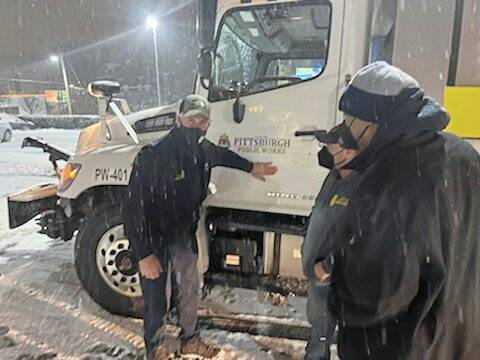https://mirror.triblive.com/opinion/editorial-brainstorming-winter-storm-plowing/
Editorial: Brainstorming winter storm plowing

There aren’t quite enough people to plow the roads this winter.
That’s a problem that was identified last year. In November, PennDOT reported it still had hundreds of temporary positions, plus plenty of regular full-time jobs, that needed to be filled to get through the winter.
On top of that, there are lots of municipalities that plow their own streets, many of whom also use seasonal workers.
On Thursday, the first real snow of the winter fell, testing just how well the systems of the various agencies will be working with their staffing needs. More wintry weather is expected Sunday, and with a couple months to go until spring, it seems likely that more snow is in the future.
With that in mind, PennDOT and the other agencies plowing the roads may need to implement some strategy to make up for the lack of human beings behind the wheels.
It’s a plan some tried to undertake Thursday, but Mother Nature hampered it by substituting her own time frame. Snow, after all, can be predicted only so much. The weather is notorious for having its own schedule and not caring much whether it works with the 9 a.m. to 5 p.m. workday.
Unity Supervisor Mike O’Barto said his municipality’s 20 trucks were heading out around 5:30 p.m. to pretreat the township’s 180 miles of roadway in advance of the weather, but the snow was falling so fast that prevention turned into plowing.
Just 10 miles or so away, Latrobe trucks were pretreating without problems at 8 p.m., proving geography of the weather can be just as hard to nail down as the time.
The state, counties and individual municipalities only can do so much to entice workers. It’s a problem being seen in every industry, but the competition is especially hot for those with CDLs, which are needed for driving a snowplow. That’s definitely not something you want to put in the hands of just anyone.
But perhaps there are logistics that could be considered during preparation. Maybe other agencies could step up to help with better prognostication of when and where the weather will hit or a better formula for using salt or brine to keep pretreated roads clearer for longer periods of time.
You can’t spin in a circle in Southwestern Pennsylvania without running into a university. Maybe someone can run the numbers for the most efficient way to clear the roads with the people on hand.
None of this is to say the workers didn’t get the job done. They did, and they deserve a hand and a hot cup of coffee. But the best pretreatment for the roads in a year when drivers are at a premium might be asking for a little more help from people who wouldn’t be driving the plows.
Copyright ©2025— Trib Total Media, LLC (TribLIVE.com)
